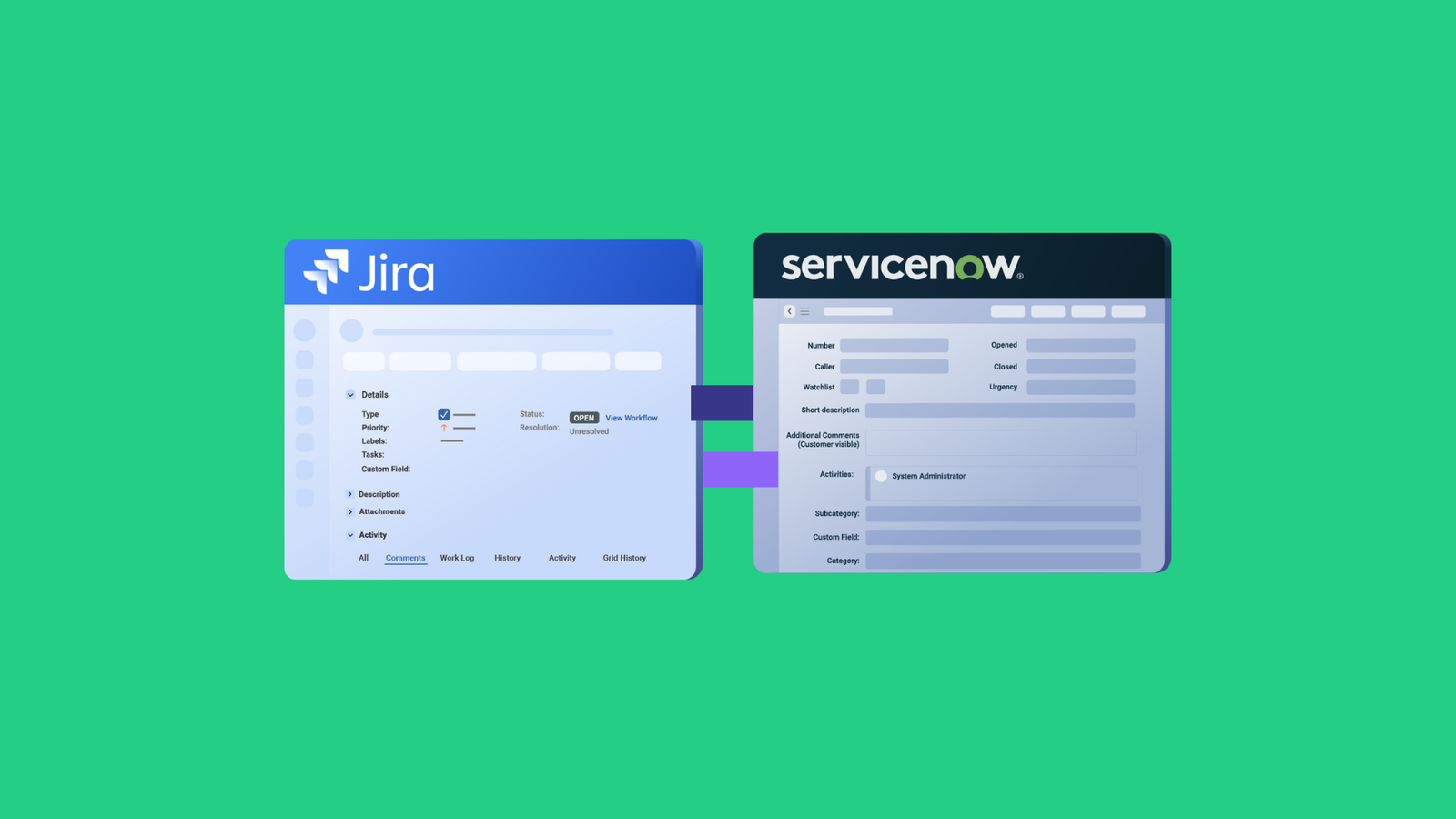In today’s business environment, there’s an increasing reliance on work management systems for daily operations like project implementation, customer support, and more.
This is a result of organizations demanding specialization in every business aspect, leading to a gamut of such systems. Teams using these best-in-class systems may not always operate within the same organization or location. And when they pull their shoulders under a joint business initiative, they need effective and streamlined collaborations.
Thus, it’s vital to extend the efficiencies of a unified team and system to other collaborating teams through integration.
This necessity gives rise to the concept of cross-company integration (CCI).
Cross-company integration is connecting diverse systems across companies and finding common ground for information exchange. This information is exchanged based on the requirements of multiple stakeholders.
Essentially, cross-company integration involves system integration, integrating people and processes along the way!

Sometimes, the integration focuses on connecting internal teams within a single organization or belonging to the same legal entity. This is what we call a classic example of intra-company integration.
Intra and cross-company integration both effectively help systems communicate and exchange information with one another, only the complexities of a CCI are different in nature.
The Business Case for Cross-Company Integration
The necessity for cross-company integration has long been apparent. It’s driven by the desire of teams from various organizations to collaborate efficiently and employ task management systems for joint projects.
However, the intricacies of cross-company integration render it a daunting challenge.
Companies on this journey recognize that integration is just the beginning; the real test lies in its maintenance. They understand the importance of sustaining efficiency levels post-integration, which often entails going above and beyond initial efforts.
Cross-company integration (CCI) presents a compelling business case, yielding tangible benefits across various fronts.
- Firstly, it fosters substantial cost savings by automating processes and reducing redundancies, thereby optimizing resource allocation.
- Secondly, CCI enhances operational efficiency by connecting disparate systems and workflows, facilitating smoother data exchange, and accelerating decision-making processes.
- Moreover, it promotes enhanced collaboration among teams and stakeholders, breaking down silos and fostering a cohesive environment conducive to innovation and growth.
By leveraging cross-company integration, businesses not only improve their bottom line but also position themselves competitively in a rapidly evolving market, where agility and collaboration are paramount for sustained success.
Exalate’s Visionary Approach to Cross-Company Integration
At Exalate, we recognize that cross-company integration is not a one-time setup but an ongoing investment. It’s not something you set up today and forget the next day.
Exalate’s CEO Francis Martens, brings his own personality to cross-company integration. His journey from a product developer to a co-founder has shaped the visionary perspective of CCI and has become a pivotal force at Exalate.
Our commitment to CCI extends beyond its implementation; it’s about incorporating and optimizing integration strategies to drive sustained growth.

Thorough preparation is important for integration initiatives, including requirements gathering, ensuring it aligns with business strategy, and assessing the potential impact on existing processes.
A well-implemented cross-company integration project harmonizes external collaborations with internal team dynamics, creating a cohesive operational environment that boosts productivity and fosters a culture of innovation and adaptability.
Organizations considering CCI adoption should prioritize environments with high volumes of repetitive tasks within process-oriented frameworks. These environments offer fertile ground for integrating disparate entities and driving shared objectives forward.
Real-World Examples of Cross-company Integration
Witnessing the potential of cross-company integration through real-world examples brings forth its tangible benefits.
Francis has encountered a lot of success stories, showcasing how businesses have used CCI to integrate their operations with partners, suppliers, and clients, fostering a new paradigm of collaboration and efficiency.
From multinational corporations to agile startups, these examples demonstrate how cross-company integration can help orchestrate workflows, enhance communication, and accelerate project delivery.
For instance, WirelessCar, an innovative player in the field of connected digital services leverages CCI to streamline its collaboration with leading automotive brands. Similarly, one of Turkey’s biggest insurance company embraced CCI to promote real-time and seamless synchronization with its suppliers. Again, DPG Media uses CCI to consolidate workflows and teams while navigating hypergrowth.
These success stories are living proof of how cross-company integration can evolve organizational agility, innovation, and sustainable growth.
Addressing Cross-company Integration Challenges
Despite the obvious advantages of cross-company integration, many companies struggle with its setup and upkeep, essentially due to its inherent complexity.
Integration Set Up and Maintenance
For many companies, implementing and maintaining the integration is a tall order.
In this context, the challenge is significant as businesses undergo constant changes every single day. Interpretations and approaches to handling tasks evolve, processes, or infrastructure changes.
These factors directly impact the investment made in integration in addition to its maintenance. So, it’s important to define integration requirements early on, be involved in the planning, configure the requirements with changing needs, and actively monitor its usage.
Operational Discrepancies
Often, companies that operate on numerous defined processes diverge significantly from what their processes indicate.
If such companies want to integrate with other companies, they are forced to implement workflows they might not be following or deal with unforeseen events.
| Francis faced a situation where two companies, collaborating for seven years, discovered unexpected problems while setting up their integration. One specific issue was the lack of a clear definition for reopening a task they intended to exchange. Without an integrated process definition, confusion arose, and team responses varied. |
An integration in such a setup will only be practical if the processes are effectively followed, resulting in end-to-end process automation, and predictable results.
Integration Security
Companies prioritize the security of their integration and with good reason. Cross-company integrations, in particular, involve high-level security requirements.

To address this challenge, it is advisable to minimize the exchange of information. Restricting data exchange independently at the endpoints of the integrating systems will ensure only the required data is shared.
Also, if appropriate safety measures are in place, integration security can be effectively achieved.
The Future of Collaboration
The current outlook on collaboration is evolving, driven by technological advances and growing interconnectedness. Cross-company integration emerges not merely as a solution but as a catalyst for cultivating a network of connected companies.
Traditional paradigms are giving way to agile, interconnected networks, where companies integrate their operations, systems, and processes to achieve collective goals.
The transformation towards a worldwide network of connected companies then becomes a reality, where organizations effortlessly collaborate with partners, suppliers, and clients, leveraging standardized protocols and shared infrastructure to drive efficiency and innovation.
The advent of technologies like artificial intelligence (AI) further pushes this transformation through automated integration assistance, predictive analytics, and much more.
Yet, when surrounded by this technological revolution, it’s important to ensure human-centric values remain at the forefront. Through these values, it’s possible to guide the ethical and equitable deployment of technology and make sure collaboration serves the greater good.
As we navigate this future, it becomes essential to cultivate a culture of collaboration, set apart by trust, transparency, and empathy, where diverse perspectives are celebrated, and collective success is prioritized over individual gain.
Recommended Reading:



